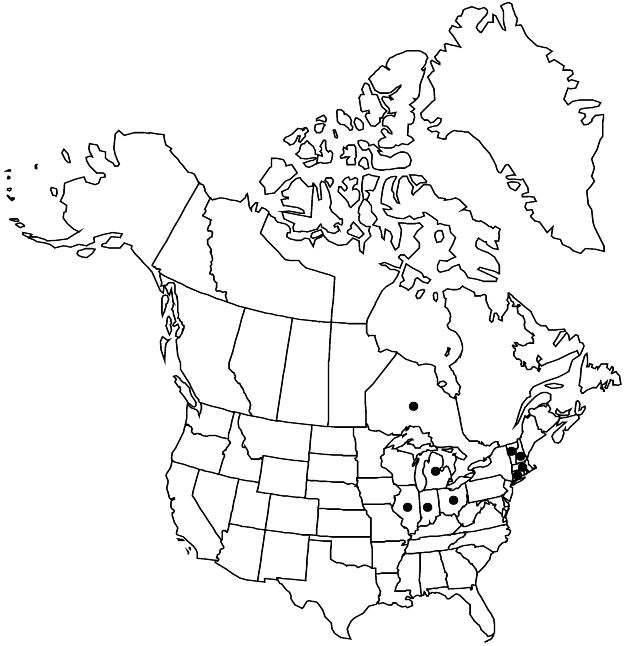Difference between revisions of "Sedum sexangulare"
Sp. Pl. 1: 432. 1753,.
FNA>Volume Importer |
FNA>Volume Importer |
(No difference)
| |
Revision as of 23:02, 16 December 2019
Herbs, perennial, laxly cespitose, mat-forming, glabrous. Stems ascending, branched, (stoloniferous), not bearing rosettes. Leaves alternate, (densely imbricate on nonflowering shoots), usually in 6 rows (fewer on flowering shoots), ascending, sessile; blade bright green, not glaucous, linear, subterete to terete, 3–6 × 0.8–2 mm, base spurred, not scarious, apex obtuse. Flowering shoots erect, simple or branched, 6–15 cm; leaf blades linear, base spurred; offsets not formed. Inflorescences moderately lax cymes, 5–25-flowered, (1–)2–3(–4)-branched; branches spreading, sometimes forked; bracts similar to leaves, smaller. Pedicels to 0.5 mm. Flowers 5(–6)-merous; sepals erect, distinct, yellowish green, linear-elliptic, unequal, 0.8–1 × 0.4–0.5 mm, apex obtuse; petals spreading, distinct, bright yellow, lanceolate, not carinate, 3–4 mm, apex acute or acuminate; filaments yellow; anthers yellow; nectar scales yellow, square. Carpels divergent in fruit, distinct, dark brown. 2n = 74, 111, 148, 185.
Phenology: Flowering late spring–summer.
Habitat: Roadsides, waste places
Elevation: 0-500 m
Distribution

Ont., Conn., Ill., Ind., Mass., Mich., N.H., Ohio, Vt., Europe.
Discussion
Sedum sexangulare was first reported as naturalized in the United States in 1942. The mature carpels have narrow brown lips along the adaxial suture.
Selected References
None.